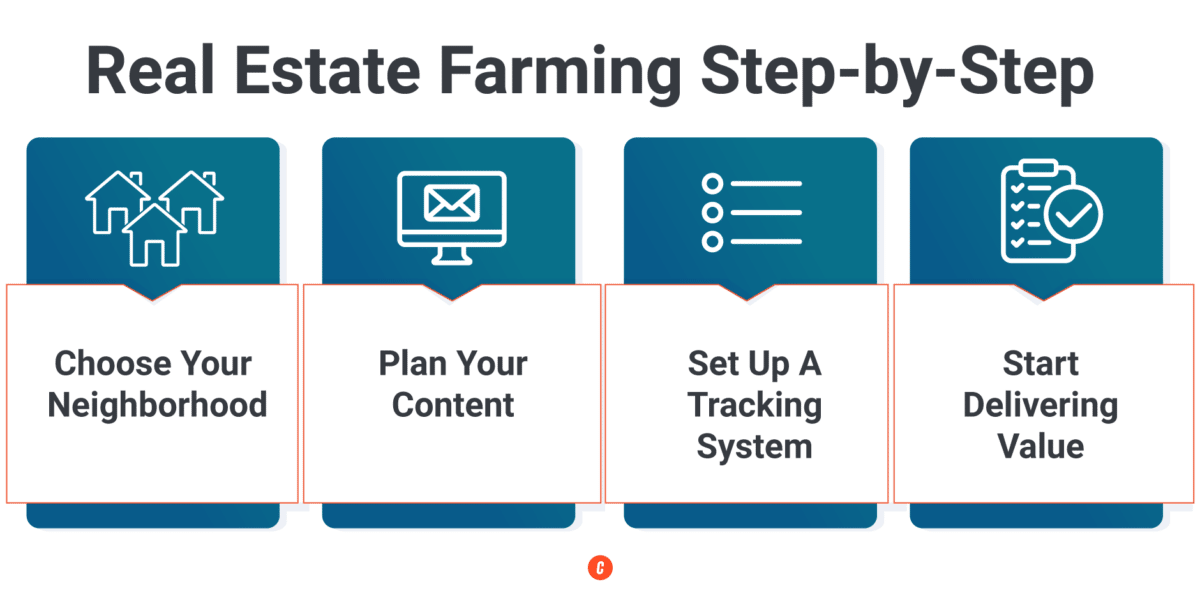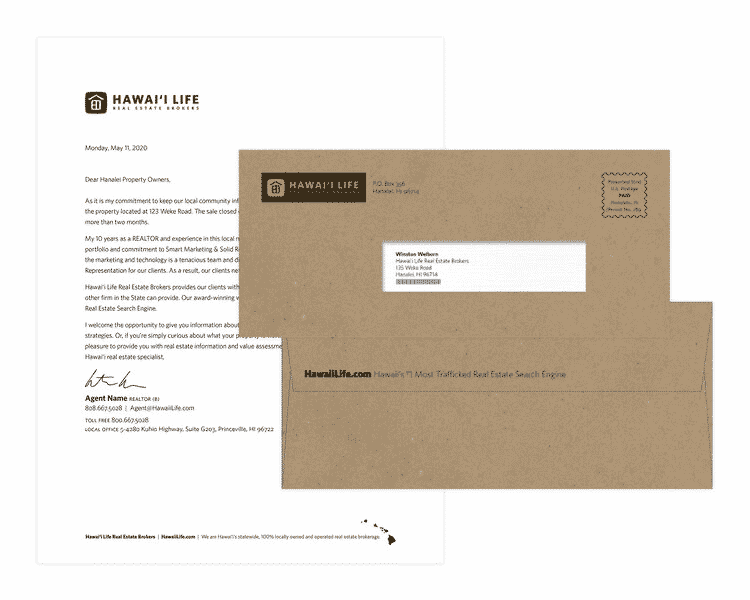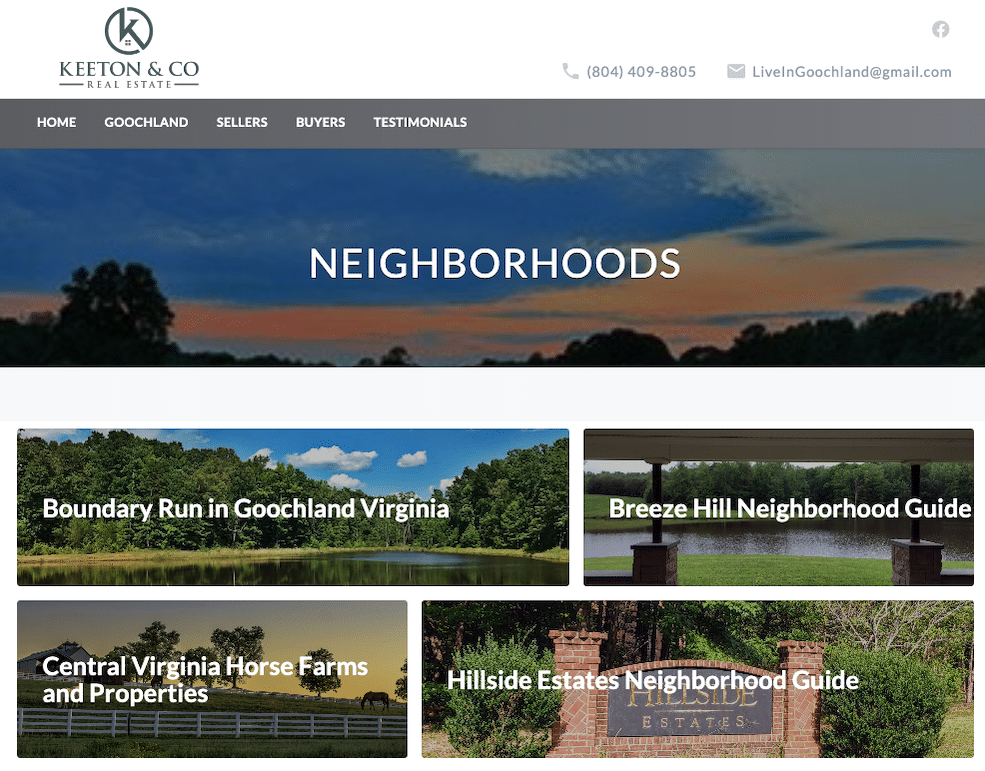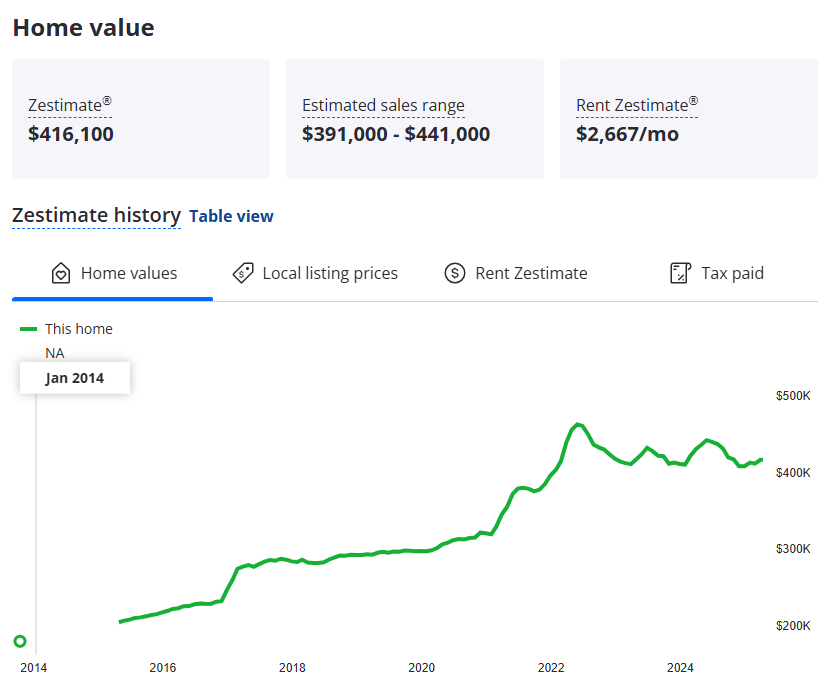32 Open House Food Ideas, Recipes & Pairings To Sell Listings
I’ve listed several open house food ideas (from savory waffle bites and whipped feta with honey dips to fruit nachos and puff pastry bites), refreshments, and even their pairings to enhance the overall impression of your event. I’ve also shared some dietary-friendly options for each item; you don’t need a separate menu to accommodate dietary restrictions — just a few well-planned alternative ingredients will make everyone feel included.
Most open house food suggestions below are mess-free and can withstand being out at room temperature. To help you further, download the food recipes!
 Bonus: Download the Recipes for these Open House Food Ideas
Bonus: Download the Recipes for these Open House Food Ideas
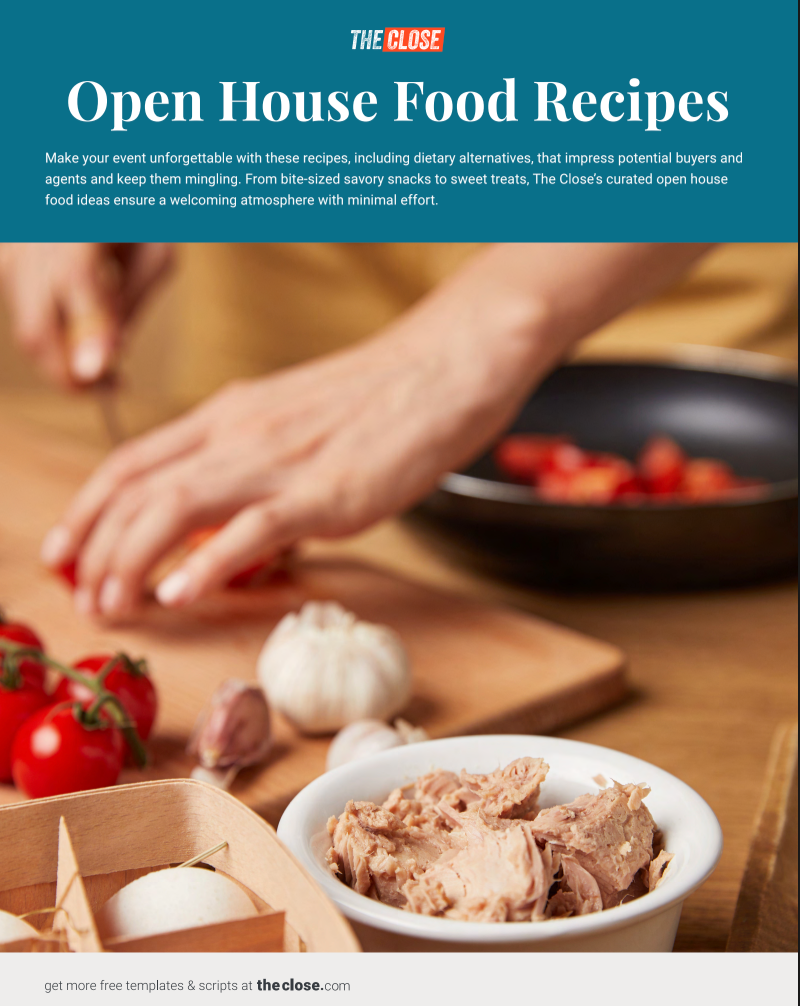
Download The Close’s Open House Recipes
Savory bites
| What it is | Special dietary alternative | |
|---|---|---|
| Charcuterie cups | Individual servings of meats, cheeses, nuts, and fruit. | Serve almond flour crackers, seed-based crisps, or veggie chips, and use dairy-free options like almond-based cheese, coconut milk cheese, or firm tofu cubes. |
| Mini quiches | Small, flavorful bites that can be made in a variety of flavors, including vegetarian options. | Use almond flour or a gluten-free crust. |
| Caprese skewers | Cherry tomatoes, mozzarella, and basil drizzled with balsamic glaze. | Make with dairy-free cheese, marinated tofu cubes, or avocado chunks. |
| Pinwheels or wraps | Sliced turkey, ham, or veggie wraps. | Provide gluten-free wraps made from corn, cassava, chickpea, or almond flour. |
| Mini croissant sandwiches | Croissant filled with brie and fig jam or turkey and cranberry aioli for a twist. | Offer a gluten-free bread or lettuce wrap alternative. |
| Cheese-stuffed mini peppers | A colorful and tasty option. | Use dairy-free cheese for lactose-intolerant guests. |
| Savory waffle bites | Mini waffles topped with fried chicken or smoked salmon and cream cheese. | Use almond or coconut flour to make a keto-friendly and gluten-free version. |
| Deviled eggs | A classic, crowd-pleasing option that is easy to prepare ahead of time. | Serve with dairy-free mayo (made from avocado oil or soy) or a chickpea-based or silken tofu filling blended with mustard, turmeric (for color), and vegan mayo. |
Keep your open house spread mess-free and mingle-friendly with bite-sized, easy-to-eat savory food that doesn’t require utensils. Offer a variety of textures and flavors to keep things interesting — from crispy to creamy and spicy to mild.
Have a plan for leftovers. If you don’t want them, take them to a nearby shelter. Remember, not everyone is comfortable eating food provided at an open house, so don’t take it personally if guests pass up on the treats.
Dips
| What it is | Special dietary alternative | |
|---|---|---|
| Whipped feta with honey dip | A sophisticated, creamy dip that pairs well with crackers or crostini. | Use unsweetened coconut or almond yogurt and agave or maple syrup for a plant-based sweetness. |
| Pimento cheese dip | A Southern favorite that is both creamy and packed with flavor. | Make with dairy-free cheese and serve with low-carb crackers. |
| Buffalo chicken or French onion dip | A creamy, flavorful dip that pairs well with tortilla chips. | Use dairy-free cheese and serve with veggie sticks or gluten-free crackers instead of chips. |
| Smoked salmon dip | A rich and creamy spread that pairs well with crackers. | Make with dairy-free cream cheese and serve with gluten-free crackers or cucumber slices. |
| Chili cheese dip | A hearty, slightly spicy option that’s always a hit at casual gatherings. | Offer gluten-free tortilla chips, corn chips, or veggie sticks as dippers and make with dairy-free sour cream or cashew cream. |
| Spinach and artichoke dip | A creamy dip that pairs well with pita or crackers. | Use dairy-free cheese and serve with veggie sticks. |
| Mango salsa trio | Mild, medium, and spicy mango salsas with tortilla chips. | Serve veggie sticks or cucumber slices for dipping. |
| Hummus | A healthy option that caters to different dietary needs. | Replace tahini with sunflower seed butter or omit it, and serve with low-carb dippers like cucumber slices, celery sticks, or cheese crisps. |
These are easy to serve and versatile, as they require minimal prep and can often be made beforehand. They encourage guests to mingle while snacking, creating a welcoming and social atmosphere.
Sweet treats
| What it is | Special dietary alternative | |
|---|---|---|
| Gourmet popcorn | A unique, low-maintenance snack with flavors like truffle parmesan, caramel cheddar, or spicy sriracha. | Replace butter with coconut oil, olive oil, or vegan butter, and use dairy-free caramel or nutritional yeast for a cheesy flavor. |
| Mini fruit tarts | A fresh and colorful dessert that adds elegance to the spread. | Make with almond flour crust and coconut cream filling. |
| Yogurt parfait cups | Individual cups with layers of yogurt, granola, and fruit. | Use coconut or almond yogurt with gluten-free granola. |
| Puff pastry bites | Light, flaky, and easy-to-eat puff pastries with chocolate or fruits. | Serve a gluten-free puff pastry with dairy-free chocolate. |
| Fruit nachos | Fruit slices topped with crunchy granola, nuts, and chocolate or caramel drizzle. | Replace chocolate or caramel with maple syrup or honey, and use coconut yogurt for a dairy-free option. |
| Cookies and macarons | Easy-to-eat desserts that many love. | Offer almond flour-based macarons or vegan cookies. |
| Chocolate-covered strawberries | A visually appealing and elegant dessert that requires no plates or utensils. | Use dairy-free dark chocolate. |
| Brownie bites | Pre-cut, small portions make them easy to enjoy. | Serve flourless brownies or use oat flour for a gluten-free choice. |
Sweets add a touch of indulgence to your open house. Many can be made ahead of time, and they balance out savory options, creating a well-rounded and inviting food spread.
Drinks
| What it is | Special dietary alternative | |
|---|---|---|
| Signature drink | A custom non-alcoholic or alcoholic drink adds a memorable touch to the event. | Use sugar-free options like stevia or monk fruit and non-dairy milk or coconut milk. |
| Infused water | A refreshing, upscale alternative to plain water. | Avoid added sugars. |
| Iced tea with fresh herbs | A twist to regular iced tea. | Offer unsweetened, but provide honey or agave on the side. |
| Arnold Palmer (half tea, half lemonade) | A well-balanced drink that suits a variety of tastes. | Use fresh lemon juice with sparkling water or black or green iced tea with no added sugar for a low-carb base. |
| Coffee and tea | A must-have for morning or afternoon events, ensuring guests stay energized | Serve unsweetened, with optional sugar-free sweeteners and dairy-free creamers. |
| Hot chocolate bar | Perfect for winter open houses, offering toppings like whipped cream, marshmallows, and cinnamon. | Provide oat milk, almond milk, or coconut milk alternatives, and use dairy-free whipped cream. |
| Apple cider (hot or iced) | A great seasonal option for fall and winter open houses. | Make with fresh, pressed apples or unsweetened apple juice. |
| Mimosa, gin and tonic, or sparkling juice bar | A self-serve station with champagne, gin, fresh herbs, sparkling water, and fruit juices lets guests customize their drinks. | Replace champagne or gin with sparkling water, zero-proof alcohol, or botanical-infused mocktail spirits, and use no-sugar-added juice. |
Refreshments, whether alcoholic or not, are great for keeping guests hydrated, complementing the food, and enhancing the overall experience. A mix of beverages — from water and juices to cocktails and mocktails — ensures there’s something for everyone and encourages guests to linger and mingle.
 A well-planned spread at an open house impacts how buyers and agents feel throughout the experience.
A well-planned spread at an open house impacts how buyers and agents feel throughout the experience.
- Buyers walking into a home with a thoughtfully prepared food selection immediately feel welcomed and comfortable, making it easier for them to connect emotionally with the space. When they feel at ease, they stay longer, explore more thoroughly, and imagine themselves living there — key factors in driving purchasing decisions.
- For agents, a great spread helps create a professional yet inviting atmosphere. Their well-fed and happy leads are more open to envisioning their future in the home — and this positive experience reflects well on the agent, increasing the likelihood of a successful sale.
Food and drink pairings
I’ve shared pairings based on the open house food suggestions and refreshment options above to help you ensure your event creates a memorable experience for your guests.
| Food | Drink | Why they work |
|---|---|---|
| Charcuterie cups | Mimosa, gin and tonic, or sparkling juice bar | The rich meats and cheeses are balanced by the acidity of a mimosa or the crispness of a gin and tonic. Sparkling juice is a refreshing, non-alcoholic alternative. |
| Mini quiches | Iced tea with fresh herbs | The buttery crust and savory filling pair well with herbal iced tea, which adds a refreshing but not overpowering contrast. |
| Caprese skewers | Arnold Palmer | The acidity of tomatoes and balsamic glaze is enhanced by the sweet and tangy Arnold Palmer, making for a refreshing combination. |
| Pinwheels or wraps | Infused water | The pinwheels pair well with infused water (like cucumber-lemon or berry-mint) to keep things crisp and hydrating. |
| Mini croissant sandwiches | Coffee and/or tea | The buttery layers of croissants are complemented by the depth of coffee or tea, which is great for brunch-style open houses. |
| Cheese-stuffed mini peppers | Hot or iced apple cider | The slight spice and creamy cheese filling balance the natural sweetness and tartness of apple cider. |
| Savory waffle bites | Mimosa | The rich flavors of the waffles, whether topped with chicken or salmon, are lifted by the citrusy bubbles of a mimosa. |
| Deviled eggs | Sparkling juice | The tangy filling of deviled eggs pairs well with sparkling juice, creating a lively contrast. |
| Food | Drink | Why they work |
|---|---|---|
| Whipped feta with honey dip | Mimosa or sparkling juice | The tangy feta and sweet honey contrast nicely with the citrus flavors in a mimosa or the fruity bubbles of sparkling juice. |
| Pimento cheese dip | Iced tea with fresh herbs | The cheesy, slightly spicy dip pairs well with a refreshing herbal iced tea to cleanse the palate. |
| Buffalo chicken or French onion dip | Arnold Palmer | The tangy-sweet combination of tea and lemonade balances the richness of these dips. |
| Smoked salmon dip | Gin and tonic | The herbal notes of a gin and tonic highlight the smoky, salty flavors of the dip, creating a sophisticated pairing. |
| Chili cheese dip | Hot chocolate bar | The spice of the chili cheese dip contrasts deliciously with the sweetness and richness of the hot chocolate. |
| Spinach and artichoke dip | Hot or iced apple cider | The creamy dip gets a refreshing balance from the tartness and spice of apple cider. |
| Mango salsa trio | Infused water | The fresh, slightly spicy mango salsa is perfectly cooled down by fruit-infused water, like pineapple-mint or citrus. |
| Hummus and veggies | Signature drink, like a juice | The signature drink (such as a basil lemonade or a cucumber cooler) enhances the nutty flavors of hummus. |
| Food | Drink | Why they work |
|---|---|---|
| Gourmet popcorn | Hot chocolate bar | The salty-sweet popcorn is a match for creamy, rich hot cocoa. |
| Mini fruit tarts | Mimosa or sparkling juice | The fruitiness of a mimosa or sparkling juice matches the tart fruit and buttery crust. |
| Yogurt parfait cups | Coffee or tea | The smooth yogurt and crunchy granola pair well with a warm, comforting cup of coffee or tea. |
| Puff pastry bites | Hot or iced apple cider | The spiced, slightly tart notes of apple cider enhance the flaky pastry and sweet fillings. |
| Fruit nachos | Arnold Palmer | The crisp fruit slices and drizzles of caramel or chocolate go well with the citrusy blend of the drink. |
| Cookies and macarons | Coffee or tea | A warm cup of coffee or tea complements the sweetness of macarons or cookies. |
| Chocolate-covered strawberries | Mimosa or sparkling juice | The light sweetness of a mimosa or sparkling juice enhances the juicy chocolate-covered strawberries. |
| Brownie bites | Infused water | The sweetness of infused water (like strawberry-basil or orange-mint) enhances the chocolatey richness of brownies. |
Tips on choosing the food and beverages
When going over your open house menu ideas, choosing the right one depends on several factors, including the style or theme, the time of day, and the season.
1. Provide easy-to-eat and mess-free food

Choose bite-sized or handheld food:
Serve mini croissant sandwiches, charcuterie cups, and stuffed pastries since those make it easy for guests to eat while mingling.
Avoid messy dishes:
Stay away from food that drips or requires utensils, like saucy pasta or soup. Instead, serve items in cups and on skewers.
2. Consider the style or theme

Match the spread to the occasion:
Go with finger food for a casual gathering and plated appetizers or elegant bites for an upscale event.
Stick to the theme:
Incorporate food that aligns with the theme, like mini tacos for a fiesta or charcuterie cups for a wine-tasting event.
3. Factor in the time of day and season

Match the spread to the time of day and season.:
- Morning: Opt for mini pastries, fruit, yogurt parfaits, coffee, and juices.
- Afternoon: Serve mini croissant sandwiches and refreshing juices or infused waters.
- Evening: Go with waffle bites, dips, bite-sized desserts, and even alcoholic drinks.
- Spring: Choose light and fresh items like salmon with cream cheese or cucumber dips.
- Summer: Provide refreshing treats such as fruit skewers, mango salsa trios, and iced tea stations.
- Fall: Offer cozy bites like whipped feta with honey dips, savory waffle bites, and warm apple cider.
- Winter: Serve hearty food such as mini pot pies, baked brie, and hot chocolate bars.
4. Choose unique but simple spreads

Add a twist to classic dishes:
Elevate familiar choices with unexpected ingredients, like waffle bites with smoked salmon or stuffed mini peppers with feta and olives.
Opt for easy-to-prepare food:
Go with dishes you can prep in advance, such as charcuterie boards and dips with veggie dippers.
5. Provide a mix of flavors and dietary options

alance sweet and savory:
Pair salty snacks with sweet treats like cheese-stuffed mini peppers with fruit nachos.
Provide options for different diets:
Serve at least one vegetarian, gluten-free, or dairy-free choice, like caprese skewers or hummus with veggie sticks.
Have trash bins available to keep the space clean when guests are done with their food and drink. Also, display a sign that lets guests know where on the property they can’t bring their snacks.
Benefits of offering special dietary options at your open house
Boosts your professional reputation
Label dishes with symbols (e.g., GF = gluten-free, V = vegan) so your guests can easily identify their options.
Increases engagement
Encourages longer visits
Tips on presenting the food and refreshments
How you present food and drink at an open house can make a big difference in guest experience and overall atmosphere.
FAQs
Is it required to provide food at an open house?
No, it isn’t. However, it is part of the marketing strategy to sell the house and show how you treat your clients. You will show the seller that you are taking the extra step to help buyers feel comfortable and envision themselves living there, and you will show the buyer that you support your clients and want to represent them in the best way possible.
Should I serve open house refreshments?
Yes! Serving refreshments at an open house is a great way to create a welcoming atmosphere, encourage guests to stay longer, and leave a lasting impression. Consider hosting a wine tasting, reserving a wine truck, or setting up a mimosa bar.
How do you prepare for an open house?
There are a few things that should be on your open house checklist, such as taking the time to plan and organize everything in advance — from the dates and times and open house snack ideas to marketing materials and social media promotion. You’ll also want to ensure you are comfortable with any tech you’ll use that day, such as virtual staging or an open house app.
The final walkthrough
Refreshments and food for an open house create a welcoming atmosphere, encourage guests to stay longer, and make the event more enjoyable. Easy-to-eat, mess-free options keep things convenient, while a variety of flavors and dietary choices ensure there’s something for everyone. Inform the homeowner what food you’ll provide — and make it your goal to leave the property in the same or better condition than when you arrived.
What do you usually serve at an open house? Let us know in the comments.
The post 32 Open House Food Ideas, Recipes & Pairings To Sell Listings appeared first on The Close.











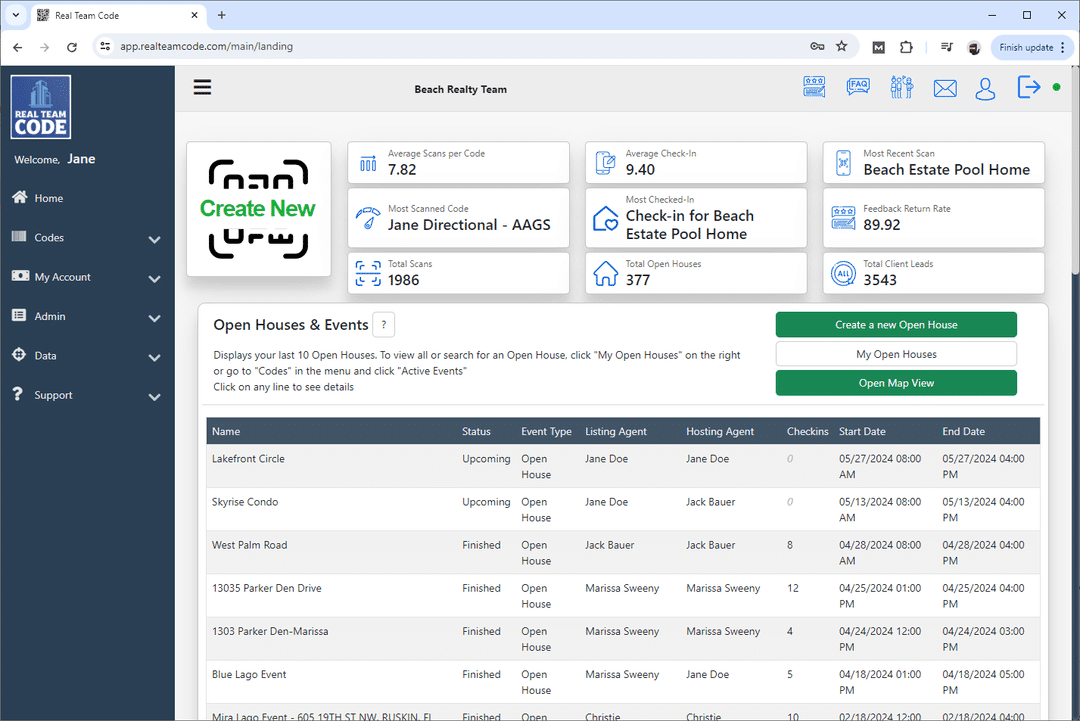



 Pro Tip
Pro Tip